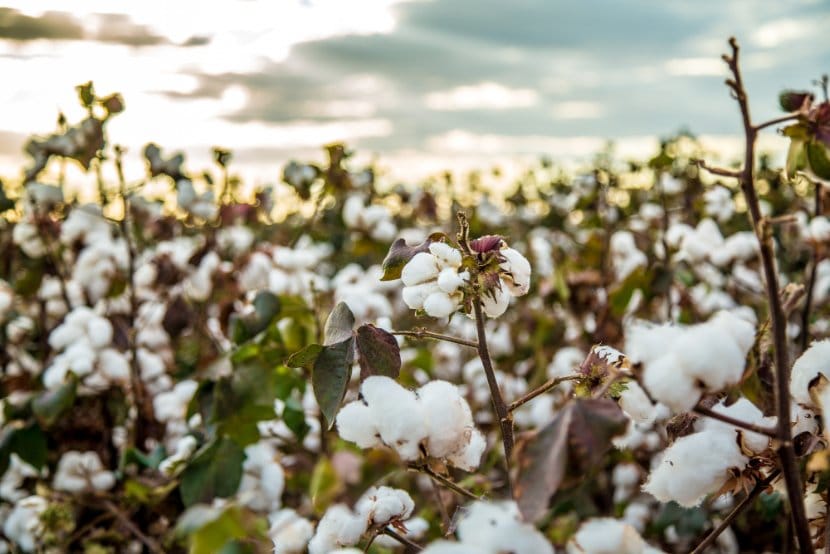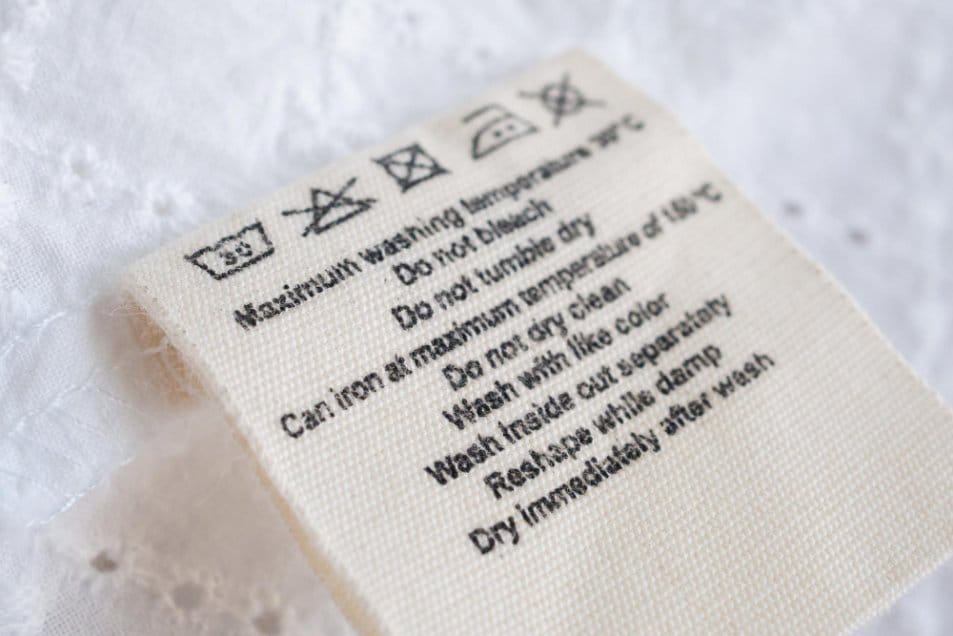Your Complete Guide to Growing, Harvesting, and Processing Cotton at Home
Growing cotton at home can be a rewarding project if you have the right climate and enough time. You need at least 200 warm days without frost, rich soil, and plenty of sunlight to successfully grow cotton plants. Learning about the plant and its needs helps you avoid common mistakes and makes the growing process easier.
From preparing your garden to planting the seeds and taking care of the plants, each step is important. Proper care will help your cotton thrive and give you a healthy harvest. If you are interested in growing something unique and useful, cotton might be the perfect challenge for your garden.
Is It Legal to Grow Cotton in Your State?
Before you plant a single cotton seed, you need to check if it’s legal in your state. Many states require permits or have restrictions on growing cotton due to boll weevil eradication programs. The boll weevil is a destructive beetle that can devastate cotton crops and spread to commercial farms.
States Requiring Cotton Growing Permits
| State | Permit Required | Contact Information |
|---|---|---|
| Virginia | Yes | Virginia Department of Agriculture |
| North Carolina | Yes | NCDA&CS Plant Pest Specialists |
| South Carolina | Yes | Contact local extension office |
| Georgia | Yes | Contact local extension office |
| Alabama | Yes | Contact local extension office |
| Tennessee | Yes | Contact local extension office |
| Missouri | Yes | Contact local extension office |
| Arkansas | Yes | Arkansas State Plant Board |
States Where Cotton Growing Is Restricted or Prohibited
- Texas: Growing cotton is largely prohibited for non-commercial purposes
- Mississippi: Requires special permits and monitoring
- Louisiana: Contact state agricultural department
- Oklahoma: Restrictions apply in certain areas
Important: Always contact your local agricultural extension office before planting cotton. They can provide current regulations and help you get the proper permits. Penalties for unauthorized cotton growing can include fines and mandatory crop destruction.
Table of Contents
Key Takeaways
- Know your climate and soil before planting cotton
- Check legal requirements and obtain permits before planting
- Managing cotton care is important for healthy plants
- Watch for weeds, pests, and plant issues as cotton grows
Understanding the Cotton Plant
Cotton is a fiber crop that has many uses and grows in a range of conditions. Choosing the right type and knowing about its properties helps you get the best results.
How Cotton Grows: The Complete Life Cycle
Cotton grows through five distinct stages over 140-180 days:
- Planting to Emergence (5-10 days): Seeds germinate when soil temperature reaches 60°F
- Seedling to Squaring (35-45 days): Plants develop leaves and prepare for flowering
- Squaring to First Bloom (45-60 days): Flower buds (squares) form
- Flowering Period (45-60 days): White flowers appear, turn pink, then red before falling off
- Boll Development to Maturity (45-60 days): Cotton bolls grow and mature
Cotton Plant Varieties
There are several main types of cotton plants. Upland cotton (Gossypium hirsutum) is the most common and grows best in warm climates. Pima cotton (Gossypium barbadense) produces extra-long fibers and is valued for its softness.
If you need high drought tolerance, look at varieties like Mississippi Brown Cotton. This variety grows tall, usually up to five feet, and can handle dry weather. Some types are also grown for their unique fiber colors, such as naturally brown or green cotton.
Heirloom and Colored Cotton Varieties
Many people don’t realize that cotton comes in beautiful natural colors beyond white. These heirloom varieties have rich histories and are perfect for fiber artists and craft enthusiasts.
Popular Colored Cotton Varieties
Brown Cotton Varieties:
- Mississippi Brown Cotton: Drought-tolerant, grows 5 feet tall, light tan to golden brown fibers
- Nankeen Cotton: Civil War era variety, naturally brown that turns copper when washed
- Coyote Brown: Modern variety with consistent brown coloring
Green Cotton Varieties:
- Green Lint Cotton: Light green fibers that become more yellowish-green after washing
- Green Foxfibre: Developed specifically for spinning, easy to process
Other Unique Varieties:
- Naturally Colored Cotton: Pink, blue, and yellow varieties exist but are rare
- Red Foliated Cotton: Features striking red leaves and stems with white cotton
- Short Season Cotton: Matures in 120 days, perfect for northern climates
When choosing a variety, consider your climate, soil, and water availability. Local extension offices often have information on which cotton types grow best in your area.
Fiber Quality and Uses
Cotton fiber comes from the soft, fluffy bolls that form around the seeds. The quality of the fiber depends on its length, strength, and color. Longer, stronger fibers are better for producing smooth and durable fabric.
Pima and Egyptian cotton are examples of cotton with superior fiber quality. Standard upland cotton is fine for most uses but may not be as soft or strong. Colored cotton varieties, like brown or green, are often used for specialty products.
Cotton fibers are widely used to make clothing, towels, and medical supplies. Lower-quality fibers may go into industrial uses such as batting or insulation. The fiber is separated from the seeds through a process called ginning.
Lifespan and Toughness
Cotton is typically grown as an annual crop. From planting to harvest, most cotton varieties take about 130 days to mature. The plants are not frost tolerant and will die once it gets cold.
Cotton plants are fairly tough. Some types can survive dry weather, especially drought-resistant varieties. However, they need enough water and good soil to produce high-quality fiber.
You should pay attention to pests and diseases, as these can affect the plant’s lifespan. Regular checks help keep your cotton healthy until harvest. Even though cotton is hardy compared to some crops, proper care is important for strong, productive plants.
Environmental Conditions for Growing Cotton

Cotton needs certain weather and soil conditions to produce healthy plants and high yields. Paying close attention to temperature, sunlight, soil pH, soil moisture, and the local climate will help you grow strong cotton.
When Does Cotton Grow: Seasonal Requirements
Cotton is a warm-season crop that requires specific timing:
Spring Planting (March-May):
- Soil temperature must be at least 60°F at 4-inch depth
- All danger of frost must have passed
- Southern states: March-April planting
- Northern cotton regions: Late May-early June
Summer Growing Season:
- Requires 140-200 frost-free days
- Peak growth during hottest months (July-August)
- Needs consistent moisture during flowering and boll development
Fall Harvest (September-November):
- Cotton season ends with first killing frost
- Harvest timing depends on variety and local climate
- Commercial fields often use defoliants to speed harvest
Cotton Season and Climate Requirements
Cotton thrives in regions with long, hot summers and moderate rainfall. The ideal cotton-growing climate includes:
- Temperature: 70-95°F during growing season
- Frost-free period: Minimum 160 days, preferably 200+ days
- Rainfall: 20-30 inches annually, well-distributed
- Humidity: Low to moderate (high humidity increases disease risk)
Ideal Temperature and Full Sun Requirements
Cotton does best when the temperature is warm and steady.
- The ideal daytime temperature for cotton growth is around 80°F (27°C) or higher. Nighttime needs to stay above 65°F (18°C).
- Temperatures below 60°F (16°C) can slow down growth or harm young plants.
Cotton needs full sun for at least 6 to 8 hours per day. Sunlight helps plants make energy, set buds, and develop fibers. Shady spots or cloudy weather can lower yields.
Avoid planting if your area has cool springs or temperatures that dip too low. Select the sunniest spot in your field or garden to make sure each plant gets enough light.
Soil pH and Soil Moisture
Cotton grows best in fertile, well-drained soil. The preferred soil pH range is between 6.0 and 6.5. If the soil is too acidic or too alkaline, it can cause nutrient problems and reduce crop health.
Before planting, use a soil test kit to check the pH. Amend the soil with lime if it’s too acidic or with sulfur if it is too alkaline.
The soil should hold moisture but drain well since cotton does not like waterlogged roots. Overwatering or standing water can lead to root rot. However, the soil should not dry out completely between watering. Maintain steady soil moisture, especially during flowering and boll set.
Climate and Environmental Factors
Cotton prefers a warm and dry climate with low humidity, but it also needs enough rainfall or irrigation during critical growth stages.
Consistent sunshine, low risk of frost during the growing season, and long summers help cotton reach full maturity. Regions with frequent rain, prolonged dampness, or cool weather may experience more disease problems or slow growth.
Wind protection is also helpful since strong winds can damage plants or blow off young bolls. It’s best to check for weeds, rotate crops, and use clean tools to reduce pests and keep plants healthy in any environment.
Preparing and Planting Cotton Seeds
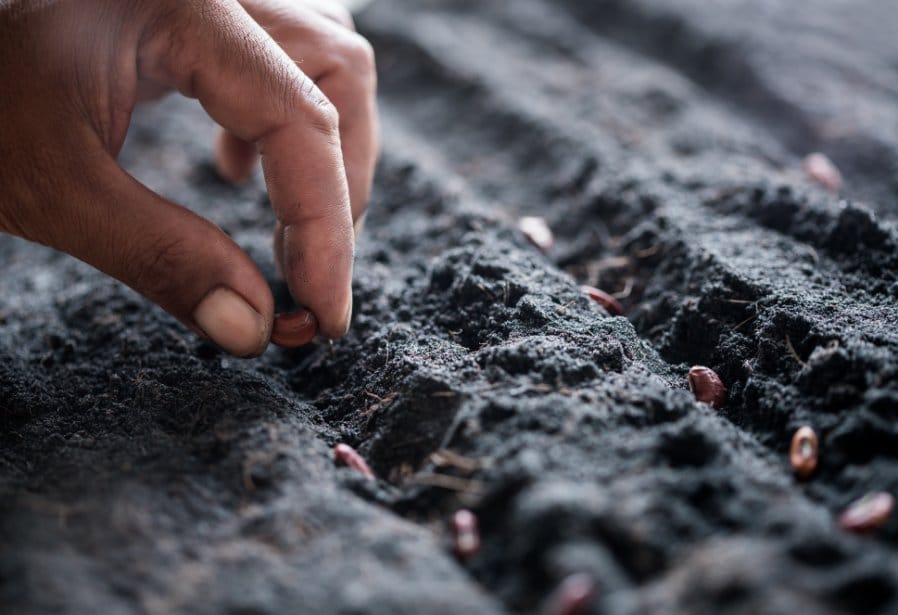
Growing healthy cotton plants begins with proper seed selection, soil preparation, and careful planting techniques. Paying attention to each step helps improve germination and gives young cotton plants the best start.
Seed Selection and Treatment
Start by picking fresh, high-quality cotton seeds from a trusted source. Avoid using old or damaged seeds as they might not germinate well.
Where to Find Cotton Seeds:
- Southern Exposure Seed Exchange (heirloom varieties)
- Local agricultural extension offices
- Specialty seed companies
- Online suppliers (check legal requirements first)
Cotton seeds have a tough outer layer that can slow down germination. Soaking seeds in warm water for 12-24 hours can help soften the seed coat. Some gardeners also use a mild fungicide to treat the seeds before planting. This can protect against soil-borne diseases.
If your seeds still have cotton fibers attached, remove as much as possible. Excess fiber can hold too much moisture and cause seeds to rot.
Soil Preparation
Cotton grows best in loose, rich soil with good drainage. Sandy loam or loam soils are ideal. The soil should be free from large rocks and debris.
Test your soil’s pH and adjust it if needed. Cotton prefers a slightly acidic to neutral pH of 5.8–7.0. If the soil is too acidic, add lime. If it is too alkaline, sulfur may help.
Work plenty of organic matter like compost into the top 4-6 inches of soil. This improves fertility and texture. Rake the surface smooth before you plant. Cotton needs plenty of sunlight, so plant in a location that gets at least 6 hours of direct sun each day.
Propagation and Planting Methods
Direct seeding is the most common method for cotton. Plant seeds after the last frost once soil temperatures reach at least 60°F (16°C). This is important because cotton does not tolerate frost.
Plant seeds 0.5–1 inch deep and space them about 4 inches (10 cm) apart in rows. Allow roughly 30-36 inches between rows for air flow and access. Cover seeds gently with soil. Water the area well, but do not flood.
You can also pre-start seeds indoors in biodegradable pots if you have a short growing season, but most gardeners plant directly outside. Keep the soil lightly moist until seedlings sprout, usually in 7–14 days.
Growing Cotton in Containers
Container growing is perfect for gardeners in areas with short seasons or legal restrictions. You can move containers indoors during cold weather and have better control over growing conditions.
Container Requirements:
- Size: Minimum 5-gallon containers, 10-gallon preferred
- Depth: At least 18 inches deep for root development
- Drainage: Multiple drainage holes are essential
- Material: Fabric grow bags work well for root health
Container Soil Mix:
- 5 parts quality potting soil
- 1 part sand for drainage
- Compost or aged manure for nutrients
- Avoid garden soil, which compacts in containers
Container Care Tips:
- Start seeds indoors 6-8 weeks before last frost
- Gradually acclimate plants to outdoor conditions
- Water more frequently than ground-planted cotton
- Use liquid fertilizer every 2-3 weeks during growing season
- Move containers to protected area during strong winds
Transplant Considerations
Transplanting cotton is not very common but can be done if seeds were started indoors. Seedlings should be transplanted after all danger of frost is gone and soil is warm.
Gently loosen and remove seedlings, keeping as much of the root ball as possible. Transplant at the same depth they grew in pots. Plant them 4 inches apart in the garden.
Right after transplanting, water well and provide some shade for a couple of days if the sun is very strong. Handle seedlings carefully to avoid damaging the roots, which can slow growth or even kill the plant.
Cotton Plant Care and Maintenance

Cotton plants need steady attention to stay healthy and productive. Good care includes the right amount of water, proper feeding, enough sunlight, and regular checks for plant health.
Watering and Irrigation Schedule
Cotton plants need consistent moisture, especially as they grow and flower. Dry soil can slow their progress, but too much water can lead to root rot. Water deeply once or twice a week to help roots grow deeper. Let the top inch of soil dry before watering again.
Watering Schedule by Growth Stage:
| Growth Stage | Water Frequency | Amount | Notes |
|---|---|---|---|
| Seedling | Every 2-3 days | Light watering | Keep soil moist but not soggy |
| Vegetative | 2-3 times per week | Deep watering | Encourage deep root growth |
| Flowering | 3-4 times per week | Consistent moisture | Critical period for boll development |
| Boll Fill | 2-3 times per week | Moderate amounts | Maintain consistent moisture |
If you live in a hot or very dry area, you may need to water more often. Early morning is the best time to water cotton because less moisture is lost to evaporation. Avoid splashing water on the leaves, which helps prevent disease.
During the flowering and boll-setting stage, cotton is more sensitive to drought. Watch your plants closely and never let the soil dry out completely during these stages. Consistent soil moisture gives the best yields.
Fertilizing and Feeding Tips
Cotton plants are heavy feeders, so they need regular fertilizer. Use a balanced fertilizer, such as 10-10-10, when planting or once seedlings are a few inches tall. Too much nitrogen can promote leafy growth but reduce cotton production.
Fertilizer schedule:
- Seedling stage: Apply a general purpose fertilizer.
- Early growth: Give another feeding as the plants begin to branch.
- Flowering stage: Use a fertilizer high in potassium and phosphorus to support flowering and boll formation.
Always water after applying fertilizer so nutrients reach the roots and don’t burn the plants. If your soil lacks nutrients, consider a soil test for best results.
Lighting and Care Level
Cotton plants need at least 6 to 8 hours of direct sunlight each day. Choose a growing spot that gets plenty of sun, like a south-facing garden bed.
If you are growing cotton indoors, use strong grow lights. Keep lights on for 12 to 14 hours each day to mimic natural sunlight. Insufficient light can make plants weak and reduce the number of bolls.
Cotton is generally low-maintenance if you provide enough light, water, and nutrients. Check your plants regularly for wilting, yellowing leaves, or stunted growth, and adjust care as needed.
Pruning and Plant Health
Prune cotton plants by removing damaged or yellow leaves as soon as you notice them. Early pruning helps air circulate, reducing the risk of fungal diseases. Nipping off weak shoots lets the plant focus on growing stronger stems and larger bolls.
Check your cotton for signs of pests like aphids or caterpillars. Remove small infestations by hand or use insecticidal soap if needed. Clean up fallen leaves and debris from around the base to avoid disease buildup.
Healthy plants are less likely to attract pests. Weekly inspections help you catch problems before they get worse. Prompt action keeps your cotton plants strong from planting through harvest.
Managing Weeds, Pests, and Diseases
Cotton plants need constant care to stay healthy and produce a good yield. You will face challenges like weeds, insect pests, and plant diseases, all of which can harm your cotton crop if not managed properly.
Weed Control Strategies
Weeds compete with cotton for sunlight, nutrients, and water. Early weed control is key because young seedlings are especially vulnerable. Common weed management methods include tillage, mulching, and herbicide use.
Most cotton farmers use a mix of pre-plant and post-emergence herbicides to tackle weeds. Timely cultivation between rows helps remove weeds that slip through. Be careful to follow label instructions for herbicides, as cotton can be sensitive to some products.
Rotate crops each year if possible. Crop rotation helps reduce certain weed populations over time. Hand pulling and targeted hoeing can help in problem spots or small fields. Staying on top of weeds prevents them from going to seed and spreading further.
Weed Control Methods Table:
| Method | When to Use | Main Benefit | Cost |
|---|---|---|---|
| Herbicides | Early season | Covers large areas | Medium |
| Cultivation | Mid-late season | Breaks soil surface | Low |
| Hand pulling/hoeing | Anytime needed | Removes tough weeds | High labor |
| Crop rotation | Yearly | Disrupts weed cycles | Low |
| Mulching | Throughout season | Suppresses weeds | Medium |
Common Pests and Their Management
Cotton attracts several damaging insects. The most common pests include boll weevils, aphids, and caterpillars. These pests feed directly on cotton parts like leaves, stems, and bolls, which reduces your yield and quality.
Monitoring your crop is essential. Walk your fields regularly to look for pest signs, feeding damage, or eggs on plants. If you spot pests early, you can act before they spread. Use integrated pest management (IPM) to help. This means combining methods like beneficial insects, crop rotation, and limited insecticide use.
When you need to spray, choose the right insecticide and use the correct rate. Spraying only when necessary helps protect beneficial insects, like ladybugs, that eat pests. Always follow local guidelines and label instructions for any chemical treatments.
Preventing and Treating Plant Diseases
Many diseases, such as fusarium wilt and root rot, affect cotton plants. Disease usually spreads by soil, wind, or water splashes. Start with certified disease-free seeds. Resistant varieties can help reduce losses from common threats.
Crop rotation is an effective practice to break the cycle of soil-borne diseases. Clean up old plant debris after harvest to remove sources of winter survival for pathogens. Ensure proper soil drainage, because wet soils encourage disease problems.
If you spot symptoms like yellowing, wilting, or dead patches, identify the disease early for fast action. Use fungicides when needed, but focus on prevention through good field hygiene and resistant seeds. Avoid over-watering, as moist conditions can promote disease.
Thrips and Other Insect Pests
Thrips are tiny insects that suck sap from young cotton seedlings. Damage shows up as silvering, curling, or distortion of new leaves, slowing plant growth. Thrips are most damaging during early plant stages, especially in cool or dry weather.
Scout fields at least once a week after planting. If thrips are present in large numbers and seedlings are suffering, use an approved insecticide. Some growers also use seed treatments to protect young plants from thrips and other early pests.
Keep in mind that other pests, such as spider mites and whiteflies, can show up later in the season. Monitor for pest outbreaks and take action quickly if needed. Healthy, vigorous plants are better able to tolerate some pest feeding without serious injury.
Monitoring Growth and Diagnosing Issues
Tracking cotton growth and checking for problems helps you get a healthy, productive crop. Careful monitoring lets you fix issues fast and make better choices as your plants develop.
Growth Stages and Heat Unit Tracking
Cotton has several key growth stages: planting, seedling, squaring, flowering, and boll-setting. Each stage has a big impact on your final harvest.
One important tool is Heat Units (Degree Days 60°F). This number tracks how much heat your cotton receives. Cotton usually needs about 750 heat units to grow mature bolls, which can take 40-70 days based on weather.
Heat Unit Calculation: Daily Heat Units = (Daily High + Daily Low) ÷ 2 – 60°F
Use a table to track heat accumulation:
| Date | Daily Max Temp | Daily Min Temp | Heat Units for Day | Total Heat Units |
|---|---|---|---|---|
| June 9 | 90°F | 70°F | 20 | 200 |
| June 10 | 92°F | 72°F | 22 | 222 |
| June 11 | 88°F | 68°F | 18 | 240 |
Recording Nodes Above White Flower (NAWF) helps you see when the plant has finished most of its fruiting, a stage called “cutout.” At cutout, about 95% of bolls are mature, and new growth stops.
Signs of Plant Problems
Look for these early warning signs to catch problems fast:
- Yellowing or wilted leaves
- Stunted plant growth
- Spots, holes, or chewed leaves
- Brown or soft stems
- Misshaped or dropping bolls
- Unusual pests like aphids or bollworms
Check plants every week, especially during rapid growth or hot, wet weather. Compare healthy and unhealthy plants side by side.
If you see patterns such as all plants near wet spots looking sick poor drainage or disease may be the cause. If leaves show spots, you might have a fungal issue. If bolls dry up early, check for insect damage.
How to Diagnose Problems and When to Get Help
You can often use checklists or online guides to diagnose common issues. Look for clear pictures of pests, leaf spots, or nutrient problems that match what you see.
Problem Diagnosis Steps:
- Identify visible symptoms (color changes, spots, damage)
- Compare to problem guides and photos
- Check recent weather, watering, and field notes
- Look for patterns across multiple plants
- Consider timing and growth stage
If several plants die quickly, or if treatments do not work, contact a plant doctor. Signs you need expert help include:
- Fast-spreading leaf or boll damage
- Unknown pests or severe infestations
- Mystery symptoms that do not fit common issues
A plant doctor can test for diseases, analyze soil, and guide accurate treatments. Regular monitoring and quick action can protect your yield.
When and How to Harvest Cotton
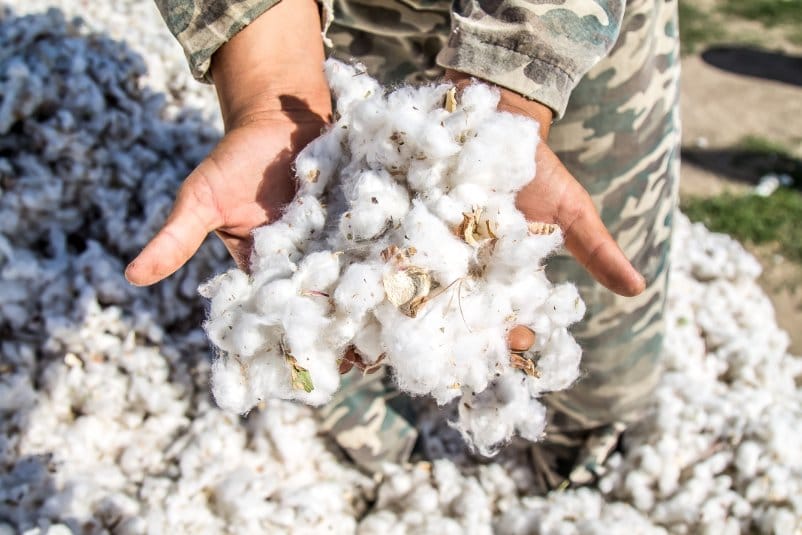
Harvesting cotton at the right time is crucial for getting the best fiber quality and highest yields. Cotton harvest timing depends on several factors including variety, weather conditions, and intended use.
When Is Cotton Harvested: Timing Your Harvest
Signs Cotton Is Ready for Harvest:
- Bolls have opened and white cotton is visible
- Cotton fibers pull easily from the boll
- Seeds have turned dark brown or black
- Plant leaves are starting to yellow (natural senescence)
- 60-70% of bolls are open
Regional Harvest Timing:
| Region | Typical Harvest Season | Peak Harvest |
|---|---|---|
| Southern US (Texas, Georgia) | September – November | October |
| Mid-South (Arkansas, Tennessee) | October – December | November |
| Southwest (Arizona, California) | October – January | November-December |
| Container/Northern Growing | Before first frost | September-October |
How Often Is Cotton Harvested
Cotton harvest frequency depends on your growing method and scale:
Small-Scale/Home Growing:
- Hand harvest every 3-5 days as bolls open
- Multiple small harvests over 4-6 weeks
- Allows collection of highest quality fiber
Commercial Operations:
- Usually 1-2 machine harvests per season
- Some fields may get 3 passes if needed
- Defoliants used to synchronize boll opening
Hand Harvesting Techniques
Hand harvesting gives you the highest quality cotton but requires more time and effort.
Step-by-Step Hand Harvesting:
- Choose the right time: Early morning after dew has dried
- Wear gloves: Protect hands from sharp boll edges
- Pick opened bolls only: Avoid forcing closed or partially opened bolls
- Pull gently: Cotton should release easily from the plant
- Use a picking bag: Canvas or cloth bag works best
- Avoid mixing varieties: Keep different types separate
Harvesting Tips:
- Don’t harvest wet cotton (causes quality problems)
- Remove any plant debris or foreign matter
- Store in breathable containers, not plastic bags
- Process within a few days to prevent deterioration
Machine Harvesting for Larger Plots
If you have a larger cotton plot, you might consider mechanical harvesting options:
Cotton Picker: Removes cotton from bolls while leaving plant intact Cotton Stripper: Removes entire bolls along with cotton (used mainly in Texas)
For most home growers, hand harvesting is the practical choice and actually produces better quality fiber.
Processing Your Cotton Harvest
After harvesting, you need to process the cotton to separate usable fiber from seeds and debris. This process is called ginning.
Hand Ginning Methods
Hand ginning is time-consuming but necessary for small harvests. There are two main methods:
Method 1: Teasing Technique
Best for: Smooth seeds and longer fiber varieties
Steps:
- Remove cotton from boll husks
- Stretch the cotton lobe lengthwise
- Locate the two rows of seeds (3-5 seeds per row)
- Use thumb and index finger to gently pull fiber away from each seed
- Work in a circular motion around each seed
- Save seeds for planting if desired
Method 2: Rolling Pin Method
Best for: Hairy seeds and shorter fiber varieties
Tools needed:
- Smooth wooden dowel (18 inches long)
- Hard surface (wood block or stone)
Steps:
- Place cotton on hard surface
- Roll dowel over cotton with firm pressure
- Seeds will separate and roll away
- Gather clean fiber
Ginning Efficiency Tips
- Work in good lighting to see seeds clearly
- Take breaks to avoid hand fatigue
- Expect about 1/3 of harvested weight to be usable fiber
- Keep different varieties separate during ginning
- Save the best seeds for next year’s planting
Processing Colored Cotton
Colored cotton varieties require special care during processing:
- Brown cotton: Fibers may lighten during processing
- Green cotton: Color can vary from light green to yellowish-green
- Naturally colored cotton: Avoid mixing with white varieties
Cleaning and Preparing Fiber
After ginning, clean your cotton fiber:
- Remove remaining plant debris by hand
- Card the cotton using hand cards or dog brushes
- Align fibers for easier spinning
- Store in breathable containers until ready to use
What to Do with Cotton Seeds
Don’t throw away your cotton seeds! They have several uses:
- Save for planting (if you plan to grow again)
- Oil pressing (though this requires special equipment)
- Composting (speeds decomposition)
- Animal feed (small amounts only)
Cotton Storage and Preservation
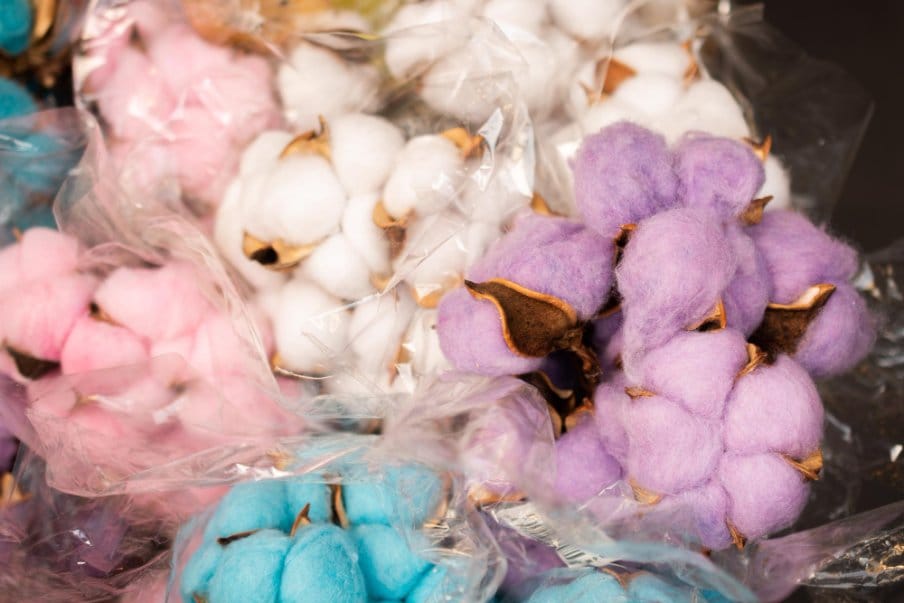
Proper storage keeps your processed cotton in good condition:
Storage Requirements:
- Dry environment: Less than 12% moisture content
- Good air circulation: Prevents mold and mildew
- Protection from pests: Sealed containers or regular checking
- Avoid plastic bags: Use breathable materials like cotton bags or wooden boxes
Long-term Storage:
- Check stored cotton every few months
- Remove any signs of pest damage immediately
- Keep storage area clean and dry
- Label containers with variety and harvest date
Economic Considerations and Costs
Understanding the economics of home cotton growing helps set realistic expectations.
Cost Analysis for Home Cotton Growing
Initial Setup Costs:
- Seeds: $10-50 (depending on variety and quantity)
- Soil amendments: $20-50
- Tools and containers: $50-100
- Permits/fees: $10-25 (where required)
Annual Operating Costs:
- Fertilizer: $15-30
- Water: $20-50 (if irrigated)
- Pest control: $10-25
Expected Yields:
- Container growing: 1-3 ounces of fiber per plant
- Garden bed: 4-6 ounces per plant (ideal conditions)
- Processing time: 2-4 hours per ounce of finished fiber
Return on Investment
Realistic Expectations:
- Home cotton growing is rarely economical for fiber production
- Main benefits are educational and recreational value
- High-quality handspun cotton yarn can be valuable for crafts
- Heirloom varieties may have collector value
Break-even Analysis: Most home cotton growers never break even on time and material costs. The value lies in:
- Learning traditional skills
- Producing unique fiber for crafts
- Educational value for families
- Connection to agricultural heritage
Frequently Asked Questions
Is it legal to grow cotton at home?
It depends on your state. Many states require permits due to boll weevil eradication programs. States like Virginia, North Carolina, and South Carolina require permits, while Texas largely prohibits non-commercial cotton growing. Always check with your local agricultural extension office before planting.
How long does cotton take to grow?
Cotton typically takes 140-180 days from planting to harvest, depending on the variety and growing conditions. You need at least 200 frost-free days for most varieties to fully mature.
Can I grow cotton in containers?
Yes! Container growing is excellent for areas with short seasons or legal restrictions. Use at least 5-gallon containers with good drainage. Start seeds indoors 6-8 weeks before the last frost and gradually acclimate plants to outdoor conditions.
When is the best time to plant cotton?
Plant cotton when soil temperatures reach at least 60°F and all danger of frost has passed. In southern states, this is typically March-April. In northern cotton-growing regions, wait until late May or early June.
How much cotton can I expect from one plant?
Container-grown plants typically produce 1-3 ounces of processed fiber per plant. Garden-grown plants in ideal conditions can produce 4-6 ounces per plant. Remember that only about one-third of the harvested weight becomes usable fiber after ginning.
What’s the difference between colored and white cotton?
Colored cotton varieties (brown, green, pink) are natural color variations that don’t require dyeing. They often have shorter fibers than white cotton and may be more challenging to spin, but they offer unique colors and historical significance. White cotton generally has longer, stronger fibers.
Do I need special equipment to process cotton?
For small amounts, you can hand-gin cotton using just your fingers or a simple rolling pin method. Larger quantities might benefit from hand cards for cleaning and aligning fibers. Professional ginning equipment isn’t necessary for home growing.
Why do some states restrict cotton growing?
Cotton restrictions exist to prevent the spread of boll weevils, destructive pests that can devastate commercial cotton crops. States that have successfully eradicated boll weevils monitor all cotton plantings to prevent reintroduction of this pest.
Can cotton survive frost?
No, cotton is very sensitive to frost and will die when temperatures drop below freezing. This is why cotton requires such a long frost-free growing season and why northern growers often use containers to extend the season.
What should I do with cotton seeds after ginning?
Cotton seeds can be saved for next year’s planting, composted, or used as animal feed in small quantities. Some growers press them for cottonseed oil, though this requires special equipment. Seeds from colored varieties are particularly valuable for preserving heirloom genetics.
Conclusion
Growing cotton at home is a rewarding but challenging endeavor that connects you to one of humanity’s most important crops. Success requires careful attention to legal requirements, proper timing, and consistent care throughout the growing season.
Key Takeaways for Successful Cotton Growing
Before You Start:
- Check legal requirements first – Many states require permits or prohibit cotton growing entirely due to boll weevil eradication programs. Contact your local agricultural extension office before purchasing seeds.
- Assess your climate – Cotton needs 140-200 frost-free days and consistently warm temperatures. If you have a shorter season, consider container growing with an early start indoors.
- Choose the right variety – Heirloom and colored cotton varieties offer unique benefits for home growers, while standard varieties may be easier for beginners.
Growing Season Success Factors:
- Timing is everything – Plant when soil reaches 60°F and after all frost danger passes. Monitor heat unit accumulation to track development progress.
- Consistent moisture matters – Cotton needs regular watering, especially during flowering and boll development. Avoid both drought stress and waterlogged conditions.
- Monitor regularly – Weekly inspections help catch pest and disease problems early when they’re easier to manage.
Harvest and Processing Insights:
- Hand harvesting produces the best quality – While labor-intensive, hand picking gives you superior fiber compared to mechanical methods.
- Processing takes time – Plan for 2-4 hours of hand ginning per ounce of finished fiber. The process is meditative but requires patience.
- Expect modest yields – Home cotton growing rarely breaks even economically, but provides valuable educational and cultural experiences.
Recommendations for Different Types of Growers
For Beginners: Start with a reliable upland cotton variety in containers. This gives you the most control over growing conditions and legal compliance. Focus on learning the basics before expanding to larger plots or specialty varieties.
For Fiber Artists: Heirloom and colored cotton varieties offer unique possibilities for handspinning and natural dyeing projects. The extra effort in growing and processing often pays off in distinctive, high-quality fiber that can’t be purchased commercially.
For Educators: Cotton provides an excellent hands-on learning opportunity about agriculture, history, and textile production. The complete seed-to-fabric process helps students understand the connection between farming and the clothing they wear daily.
For Heritage Preservationists: Growing heirloom cotton varieties helps preserve genetic diversity and cultural heritage. Your efforts contribute to maintaining these important agricultural resources for future generations.
The Bigger Picture
Cotton growing at home offers insights into sustainable agriculture and the true cost of natural versus synthetic fibers. The labor-intensive process helps develop appreciation for the work that goes into producing natural textiles and may influence your choices as a consumer.
While you may never produce enough cotton to make your own clothing, the knowledge gained from growing this remarkable plant enriches your understanding of agriculture, history, and the complex systems that provide our daily necessities. Whether your cotton becomes handspun yarn, educational displays, or simply compost for next year’s garden, the experience of growing it connects you to thousands of years of human agricultural tradition.
The future of cotton growing will likely see continued emphasis on sustainable practices, water conservation, and preservation of genetic diversity. Home growers play a small but important role in this future by maintaining heirloom varieties and developing deeper understanding of this critical crop.
Remember that every expert cotton grower started as a beginner. Don’t be discouraged by initial challenges or modest yields. Focus on learning and enjoying the process, and your skills will improve with each growing season. The satisfaction of processing cotton you grew yourself makes every hour of effort worthwhile.

